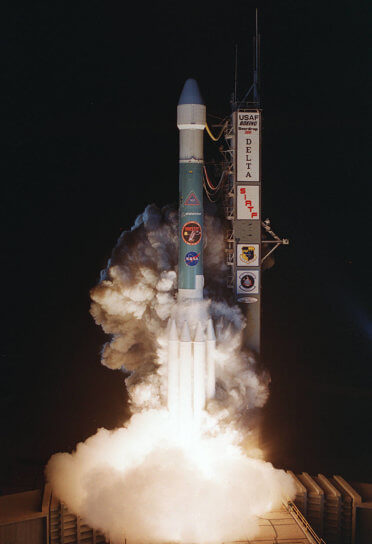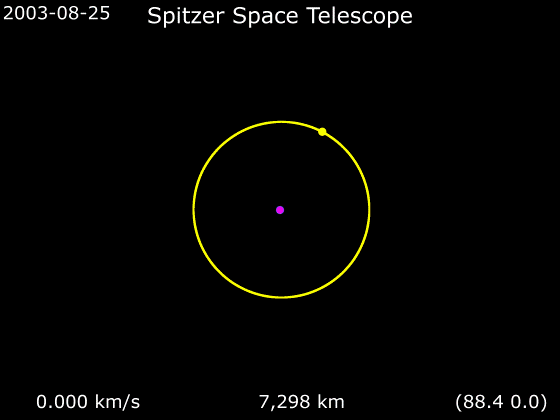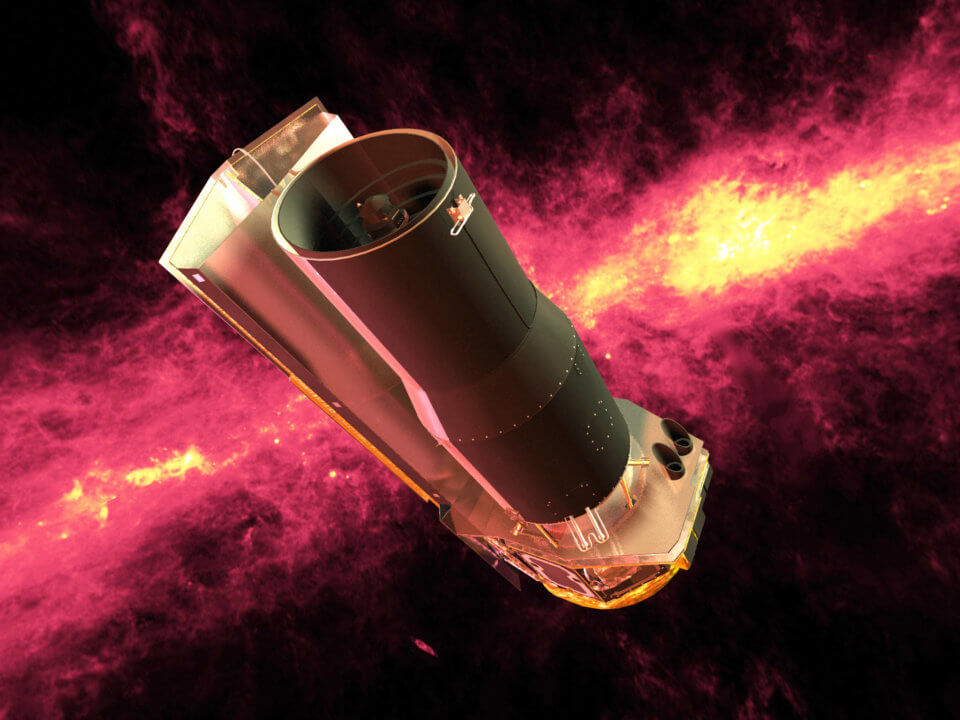After over 16 years exploring the unseen infrared light of the cosmos, NASA officially powered down the Spitzer Space Telescope on January 30, 2020.
The Spitzer Space Telescope is one of NASA’s four “Great Observatories.” Launched between 1990 and 2003, the Hubble Space Telescope, the Compton Gamma Ray Observatory, the Chandra X-ray Observatory, and the Spitzer Space Telescope worked independently and together to provide astronomers with a brand-new view of the universe spanning different wavelengths of the electromagnetic spectrum.
 Named after Lyman Spitzer, Jr., one of the first scientists who suggested putting a telescope in space, the Spitzer Space Telescope launched on August 25, 2003 with the goal of exploring infrared light. Different wavelengths of light can unveil unique features of the universe. For instance, Spitzer was able to image objects too cold to emit significant visible light, like the dusty matter found in space between stars or exoplanets outside of our solar system.
Named after Lyman Spitzer, Jr., one of the first scientists who suggested putting a telescope in space, the Spitzer Space Telescope launched on August 25, 2003 with the goal of exploring infrared light. Different wavelengths of light can unveil unique features of the universe. For instance, Spitzer was able to image objects too cold to emit significant visible light, like the dusty matter found in space between stars or exoplanets outside of our solar system.
Spitzer’s primary mission was planned to last for only two and a half years but continued to operate for over five until the spacecraft ran out of liquid helium necessary to cool two of its three instruments. The telescope has continued to operate for an additional decade sending back breathtaking and fascinating views of galaxies, exoplanets, and interstellar space. While Spitzer’s contributions and discoveries are too numerous to mention, the influence of this observatory have been felt in almost all areas of astronomy – ranging from the first study of an exoplanet atmosphere in 2005, to the discovery of a new ring around Saturn in 2009, and completing a 360-degree map of the Milky Way in infrared light in 2014.
As the Spitzer telescope has continued to make new discoveries, it has also been getting farther-and-farther from home. The satellite’s orbit takes it farther away from Earth each year, and communicating with the observatory has been an increasing challenge. After long exceeding its original mission length and objectives, NASA sent their final commands to the orbiting observatory on January 30, 2020, officially decommissioning the second of its four Great Observatories (the Compton Gamma Ray Observatory was retired in 2000).

Animation of Spitzer Space Telescope trajectory around Earth
NASA hopes that the new James Webb Space Telescope (JWST) will continue the work that Spitzer started exploring the hidden infrared secrets of the universe. Currently scheduled for launch in 2021, the JWST is the next-generation mission that will be the first true successor of the Hubble Space Telescope and other Great Observatories, allowing astronomers to see deeper into space and farther back in time than ever before. For more information on the Spitzer Space Telescope and its many discoveries, check out Sixteen Images for Spitzer’s Sweet Sixteen.






